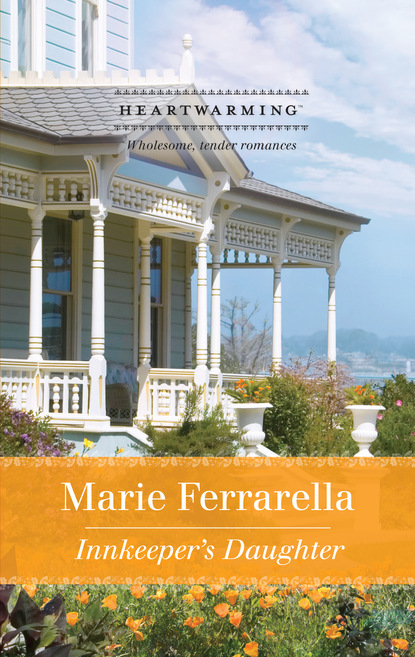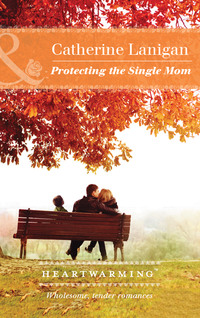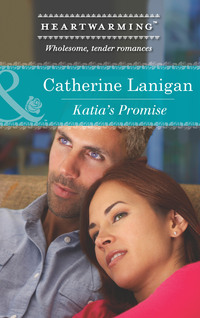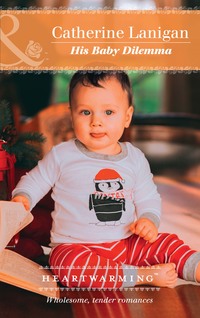
Полная версия
Heart's Desire
Remembering their phone conversation, Maddie’s head was filled with thoughts of Alex. He was like a dream to her. He was tall, blond and wide-shouldered, and had a very strong jaw that looked as if it was chiseled from granite and a dimple in his chin. His blue eyes were the color of cornflowers in summer. His smile revealed sparkling white even teeth, and his full lips completed a face so handsome she finally understood why the Greeks invented a god of male beauty. Alex could have been a dead ringer for Adonis.
The first time she’d met him in his office, she was impressed with his confidence, sincerity and assuredness. He was the kind of man people trusted with their entire life’s savings. He was the kind of executive people turned to when their world was crashing down around them. Maddie’s first impression was that this man was smart enough, savvy enough, to turn around even the worst-case scenarios.
Now, he’d sent her flowers, and he’d been especially sweet to her on the phone, making her think about things romantic.
It had been a long, long time since Maddie had had time or room in her thoughts for anything other than her passion for her career.
Romance was something she’d discarded when she was seventeen, when Nate Barzonni had asked her to marry him and then left town the next day. He’d never called or written. She’d never received an explanation. He’d simply disappeared.
For over a decade, she’d been heartbroken and very, very angry.
No, Maddie thought. Romance was something that existed only in her past.
CHAPTER TWO
NATE BARZONNI WAS early for his seven o’clock meeting with Dr. Roger Caldwell, chief surgeon and head of the new cardiology wing at Indian Lake Hospital. Nate had been sitting in his car in the foggy cold since six thirty-five, his hands wrapped around a large, double-shot latte from the drive-through window at Book Shop and Java Stop.
As he entered the hospital and took the elevator up to Dr. Caldwell’s office, Nate realized he was nervous as a cat about this interview. It wasn’t that he didn’t think he’d get the job. He knew the position was his for the taking. He was the only applicant who had any experience with the new cold beam laser surgeries that every hospital in the nation wanted. Though catheter ablation surgery, the process of “burning” away misfiring nerves inside the heart to treat arrythmia, had become as common as bypass surgery, the cold beam laser was truly cutting-edge technology. Cold beam created a clean, open channel to the heart by drilling several holes from a dying heart muscle to the left ventricle. Once the holes healed, they triggered a growth of new muscle, so oxygenated blood could flow into the heart, which hadn’t been receiving proper oxygen and nutrients. Finding the surgeons to perform the procedure was difficult. Nate was keenly aware that he could have gone to Los Angeles or San Francisco, and he’d been offered a position in Scottsdale, but most hospitals wanted him to sign a three-year contract. Indian Lake demanded only a single year. One year was more to his liking because Nate wanted to prove himself—fast. With a year under his belt as a top cardiac surgeon at the Indian Lake Hospital and working in their Ablation Department, he could go wherever he wished and he would get the kind of financial backing he would need. For years, Nate had dreamed of one day landing a department chief position at a major hospital. But last year, that all changed.
Nate had spent a year on an Indian reservation in Arizona, ostensibly to whittle his medical school loans down by half. He’d learned about the government plan that enticed newly-licensed doctors and dentists from a shipmate of his in the Navy. Within a few days of treating patients on the reservation, Nate saw a desperate need for doctors with his skill level. He’d never considered himself a humanitarian, but something happened to him during that year that changed his view of life. These people could not afford highly specialized ablation surgery. And there were very few surgeons in his field willing to sacrifice money and possibly fame to help them. Nate realized he could make a real difference in the world.
By the end of his stint at the reservation hospital, Nate had come face to face with his life’s passion.
Indian Lake was exactly the place Nate needed to be for the short term. And afterward...he’d ratchet himself up another several notches toward his dream.
* * *
“DR. BARZONNI?” A MAN’S voice asked in a clear, clipped tone.
“Yes, sir.” Nate snapped to his feet from the uncomfortable metal-and-plastic chair he’d been seated in. Nate presented his hand to the tall, slender man with an angular face. Dr. Roger Caldwell was in his late forties and looked fit, in a long-distance-runner way. He wore black slacks and a long white lab coat over a cheap maroon oxford-cloth shirt and blue-and-red-striped polyester tie. This was the third interview Nate had been on, and at every hospital, every major clinic, the administrator responsible for choosing the hospital uniforms and outlining the dress codes apparently won the job based on their obvious lack of fashion sense and color blindness. “Dr. Caldwell. It’s a pleasure to finally meet you, sir.”
They began walking down a carpeted hallway.
“You can drop the ‘sir.’ We aren’t all that formal around here.” Dr. Caldwell flipped through some papers in a manila folder marked with Nate’s name. “And you haven’t been in the navy for quite some time.”
“Sorry, sir. I mean Doctor. It’s my upbringing as much as the navy.” Nate smiled.
“I know your parents quite well, so I understand completely.”
“They’re still old-world Italian, I’m afraid. In fact, they’re insisting I live at home with them once I move back to Indian Lake.”
“Nothing wrong with that,” Dr. Caldwell replied, scratching his temple. “Frankly, I’d like to see a bit more of it myself.” He took a couple steps back and then waved his right arm in front of an open door. “Let’s step into my office, shall we?”
“Thank you very much, sir. Doctor.” Nate laughed good-naturedly.
For as austere and sparse as the waiting area was, Dr. Caldwell’s office was quite the opposite. Colorful Persian rugs covered the laminate floors. The furniture was modern and sleek, made of glass, chrome and wood. A butter-yellow leather sofa sat against the back wall with two massive, off-white leather Barcelona chairs flanking it. A squatty black vase of tropical flowers sat in the middle of a kidney-shaped coffee table. The room was lit by dozens of tiny halogen ceiling fixtures, and natural light flowed in from skylights and a very large window that looked out on Main Street where the morning traffic was building to a bustling crescendo. The sun skirted around and through huge snow clouds, which had come to perform their own kind of magic and alter the scene below. Slowly, a very light snow started to fall. From the fifth floor, the view was captivating, and as Nate gazed out across the commercial-building rooftops and toward the housetops of Maple Avenue and Lily Avenue, he realized he was eye level to the many church spires that dotted nearly every block of Indian Lake. From this height, it didn’t take much imagination to see the fantasy aspect of the town. As the snowflakes grew in size and number, they fell delicately on the grand shoulders of the Presbyterian church, creating white, lacy epaulettes. Nate had always loved all the churches of his hometown and how they stood for hundreds of years, never swerving, never capitulating or seeming to decay. Unlike many other cities or towns, the people of Indian Lake renovated, renewed and shored up their treasures. They put new foundations on their buildings, installed new roofs on their banks and fixed storefront windows. They adapted and perfected, modernized and improved, but they never destroyed the original structure, the soul of their buildings, which was part of the soul of the town. He’d forgotten how little things like that mattered to him.
“Nice view, isn’t it?” Dr. Caldwell asked.
“Spellbinding.”
“Interesting you say that. I thought the same thing when I moved here. I came from New Jersey. The unpretty part of New Jersey. I was a class-A nerd in a street-gang-infested world. I couldn’t wait to get out of there.”
“Is that why you joined the navy as well, sir?”
“It is. Best move I ever made. I fell in love with Chicago the minute I walked off the bus. But once I got married and left the navy, we started looking around for a small town. You know, to raise kids and all. We came here on a winter vacation, actually, and stayed four days. Everyone was so friendly and we loved all the little shops and cafés. My wife and I were hooked. I’ve always wanted to live in a small town.”
“Funny. When I was growing up here, I couldn’t wait to leave. See the world. Have an adventure.”
Dr. Caldwell laughed and sat in his black leather desk chair. He leaned back in the chair and watched the falling snow. “I had plenty of adventure. Persian Gulf. I was fortunate enough to be part of the launch of the Sullivan to the Mediterranean Sea on August 12, 1995. I’ll never forget it. This was the second ship, Nate, to be named for the Sullivan family, who’d suffered the greatest loss of any one American family in the Second World War.”
“I remember the story well.”
Dr. Caldwell smiled to himself. “I was lucky. I sailed over half my naval career. How about you?”
“Not so much. I spent most of my navy years in and around the Great Lakes. I signed up as a corpsman and worked at the Great Lakes Naval Hospital while I received my training. I didn’t mind it so much, though. I used my time wisely. I took advantage of the extracurricular college classes. I took every class that was a requirement for premed. By the time I finished my service, I had three years of credits piled up. I went to Northwestern on the GI Bill and finished up my undergrad. Then I got more loans for medical school and stayed on at Northwestern. I rejoined the navy as a doctor after med school and completed my internship and surgical residency. I finished my cardiology residency at Northwestern as well. As you know, I’m finishing up my year-long contract at an Indian reservation in Arizona, which pays off the bulk of my loans. I’ll still have a bit of debt, but it’ll be manageable.”
“No family?”
“No, sir. I have a single-track mind and I wanted to get myself set up in medicine before I took on that kind of responsibility. Frankly, taking care of me was just about all I could handle.”
“Smart man,” Dr. Caldwell replied.
Nate glanced outside at the spires that poked through the frosty cotton quilt that nature was spreading across the town and wondered why the scene tugged at him. Nostalgia, probably. “Thanks.”
“These letters of recommendation from Northwestern, from your commanding officers, the other naval doctors you’ve worked with and the head of the Hopi and Navajo tribes attest to the fact that you’re quite a gifted heart surgeon, Dr. Barzonni. Imagine what you could do here with all our new equipment.”
“I’m very excited about working with the cold beam laser. I got my initiation at Northwestern when I was doing ablations with Dr. Henry Klein. Do you know him?”
“Haven’t had the pleasure.”
“He’s been my mentor for years,” Nate replied, his words laced with respect.
Nate was extremely grateful for the guidance and friendship Dr. Klein had given him. Nate was also aware that the man looked upon him almost as family.
Nate continued. “Dr. Klein is the one who talked me into doing work on the reservation. Not only was the program government run and would pay a good chunk of my student loans, but he said I needed to get my hands away from the luxuries of big-city methods and equipment. He wanted me to learn how to use my instincts. Listen to my gut when dealing with patients. He wanted me to treat the patient not just the disease. My entire perspective on life changed. Thanks to him and my time on the reservation, I believe I found my calling.”
“Interesting. Is that what he did? Work on a reservation?”
“No. He spent five years in Kenya.”
Dr. Caldwell whistled. “When was this?”
“It was back in the eighties, when the AIDS epidemic was rampant. Not that it isn’t now.”
“Sounds like a good man. I’d like to meet him.” Dr. Caldwell steepled his fingers, placed his lips against them and considered Nate. “Do you mind my asking why you aren’t going back to Chicago and working with Dr. Klein? I’m sure he wants you.”
“He does. Desperately, in fact.
“I’ll be frank if I may. I have an offer from Dr. Klein. But working in Chicago or at any big-name hospital, where I’m just another rat in the pack, isn’t what I want anymore. I want to go back to Arizona and work on the reservations out there. There’s an incredible need and I believe I can fill it. But to do that, I need the experience with cold laser beam surgeries.”
“And that’s why you need me?”
“Yes, sir.”
“So, you’re going to hold me to that one-year contract.”
“That’s my intention, yes. Barring anything unforeseen.”
Dr. Caldwell leaned forward. “I know your family fairly well. Your mother is still active with the hospital foundation. There are no health issues with either of your parents?”
Nate smiled broadly. “No, no. Mother and Dad are just fine. As are my brothers.”
“Well, my team would very much like having you on staff. Now, I’d like to show you our electrophysiology lab. It’s quite something. We have fourteen different computer screens on which the team watches an in-progress ablation. We have two new ORs for open-heart and bypass surgeries. We’re performing a half-dozen pacemaker and defibrillator implants a day. We would do more, but we’re taking on the more difficult hypertrophic cardiomyopathy cases. Those surgeries last about four hours each, as you know.”
“I do. Makes for a long day,” Nate commented as he rose and followed Dr. Caldwell out to the newly carpeted corridor that led to the surgical area.
“I guess I’d better tell you now, Nate, this hospital pulls from an eight-county area, and it’s my goal to really put this cardiac center on the map. I want the best on my team, and so far I’ve been able to get them. South Bend has the orthopedic business socked. But this hospital has been shooting for awards in the cardiac field for twenty years. In the past six years or so, we’ve made some real headway. I want to be the best of the best. I sense a competitiveness about you as well. My conjecture is that you have the makings of an exceptional surgeon.”
“I’m flattered you consider me that good.”
“You aren’t yet, but you will be. You’re a man of single focus, and that’s what I need. This job will be a lot of hard work.”
Nate smiled as they approached the elevator and Dr. Caldwell pressed the up button. “I like challenges,” Nate said firmly and sincerely. “They make for the sweetest victories.”
CHAPTER THREE
MRS. BEABOTS SMOOTHED the skirt of her black silk dress with the red-rosebud print and white starched collar that she loved so much. It was the last dress her husband had bought for her before he died, and therefore, it carried great sentimentality for her. It was important for her to wear something special today. Despite it being Valentine’s Day, today was a most remarkable day in her life and that of Sarah’s as well. Mrs. Beabots was here at Bride’s Corner to give her opinion and advice about this most auspicious of all dresses a woman would ever wear—her wedding gown.
She was honored that Sarah had sought her counsel, but she had also told Sarah she would tell the unvarnished truth. “You look like a strumpet,” Mrs. Beabots said evenly. “It’s not that I don’t like it, it’s just not what I pictured you would want.”
“Come on. This is a designer dress. It was featured in two of the fourteen bridal magazines I bought. I thought it was...” Sarah looked at herself in the mirror and frowned. “I thought it was sophisticated and the clean lines made me look a bit taller. Thinner.”
“Stay away from Maddie’s cupcakes and you won’t need to worry about your waistline,” Mrs. Beabots said with a smile on her face that nearly dripped honey. She knew exactly how to deliver the truth when the truth was not exactly what was expected. She swept her eyes over the yards of white peau de soie that were tucked and wrapped around Sarah’s perfect figure. The dress was strapless, in the mermaid style, which was all the rage, Mrs. Beabots had been told. A bolero jacket covered Sarah’s bare shoulders with dozens of lace and silk flowers around the collar and bottom of the jacket. At the lower hips, the tightly wound section ended, and the skirt flared out into a long fantail of peau de soie. It was sophisticated. It was extraordinarily elegant. But it wasn’t Sarah.
Maddie sat next to Mrs. Beabots on the faded gold brocade settee that faced the large front window in the store. On either side of the window, angling in toward the room were enormous cheval mirrors.
Sarah looked at Maddie. “What do you think?”
“It’s too low-cut for St. Mark’s, that’s for sure.” She tilted her head to the right and then the left. “It’s a beautiful gown, but I always thought of you in something wistful and dreamy, with a train of little boys in white satin knee pants behind you.”
Sarah turned and observed her backside in the long mirror. “Maybe I’m not the city sophisticate I thought I was.”
“I doubt that’s how Luke sees you, dear,” Mrs. Beabots said flatly. “I know I don’t. You’re too sweet.” Mrs. Beabots shuddered. Being sophisticated was a bitter-tasting idea.
“True,” Sarah replied. “I just look too...”
“Poured in,” Maddie said, getting up. “The dress is lovely, Sarah, but this mermaid style is so formfitting that no woman but a very confident supermodel would be comfortable in it. You need...” Maddie wandered over to a rack of spring wedding dresses that Audra Billingsly, the owner, had just rolled into the front room.
Audra pressed a clump of errant red hair back with her palm as she bent down to put the brake on the rack. “These just came in, Sarah. None have been ironed, but maybe there’s something here that suits you better. I’ve got several top designers as well as some very affordable gowns. My yummiest is this Carolina Herrara, with embroidered cabbage roses along the tiered second hem. It’s frightfully expensive, though.”
Sarah shook her head as she looked at the price tag. “It’s gorgeous, but out of my league.”
“This Claire Pettibone has a knee-high hem in front and falls to a train in back, and look at all the appliquéd spring flowers. Isn’t it gorgeous?”
“It is,” Sarah agreed, “but it’s still not quite right.” Sarah sank onto the settee next to Mrs. Beabots. “I had no idea this was going to be so difficult. I can’t seem to choose—they’re all so beautiful. I like these dresses with the high-low hem, since we’re going to be on the beach for the reception. But if I spend more on the dress, I don’t think I’ll be able to afford flowers. And as much as I envision a church filled with flowers, I’m afraid my budget can’t stretch that far.”
“Don’t worry about flowers now, Sarah,” Mrs. Beabots said. “I’ll be planting a new rose garden for you this spring and we’ll have plenty.” She nodded reassuringly.
Sarah gave her a hug. “You are always a step ahead of me, aren’t you?”
“I should be. I’ve been around longer.”
Maddie perused the rack of new gowns and took a dress off the rack and held it up to herself. “Sarah, now, this is your dress.” She turned to Audra. “Who’s the designer?”
“You have exquisite taste, Maddie. It’s an Oscar de la Renta. Why don’t you try it on. It’s a six, just your size.”
The elegant, A-line, white peau de soie skirt was embroidered with green-and-white lilies of the valley. With the green-and-white strapless bodice, the dress would give the impression that the bride had just walked out of a forest garden.
“That would be fun, Maddie,” Sarah urged. “You and I are about the same size and both blonde. Let me see what it looks like on you. Besides, it will take a crowbar to get me out of this gown, and we’d be here till dinnertime if we had to wait on me.”
Maddie couldn’t tear her eyes from the gown. “I’ve never seen anything like it. May I?”
“Absolutely. Let’s go into room two. I’ll help you with the dress.” Audra led Maddie toward the fitting rooms.
While Sarah and Mrs. Beabots discussed floral arrangements for the church and possible plans for their spring gardens, Maddie went to the dressing room and let Audra help her into the gown.
Audra supplied a white lace strapless corset and bra, and a straight white nylon half slip. Then Maddie donned a horsehair net underskirt that would allow the A-line of the skirt to bell out. Over that, she pulled on a second underskirt of white silk. Audra handed Maddie a pair of thigh-high, elastic-topped white hose to wear and a pair of white peau de soie pumps with two-inch heels. Finally, Maddie stepped into the gown and Audra zipped up the back and fastened the white satin ribbon that encircled Maddie’s waist, tying a bow in back. In the center of the bow she pinned a tiny fabric nosegay of lily of the valley. The entire bodice and skirt were covered in eight-inch leaves in varying shades of green. The flowers were embroidered in white silk, and in the center of each was a crystal bead, so that each time Maddie turned under the chandelier in the dressing room, she sparkled a if dew had just settled on each flower.
“It’s absolute magic,” Maddie gushed in an awe-filled whisper as she looked at her reflection in the gilded mirror. “I had no idea...”
“That you were so beautiful?” Audra finished the thought for her.
Maddie was spellbound by her own reflection. She honestly didn’t know who that woman with the sparkling green eyes could be. She’d been so used to working in jeans, corduroys, sweatshirts and aprons nearly all her adult life that she’d never once stopped to think of herself as a girl who wore pretty dresses or gowns, or even as a...bride.
And you aren’t a bride. This is just pretend. Standing in. Wishful thinking.
Dark shadows filled Maddie’s eyes as she continued to look at herself. Was it possible that only today, the flutter of a memory of Nate Barzonni, her first love, a high school romance, had haunted her? Even now, as she recalled his blazing Mediterranean-blue eyes and the intoxicating, addictive kisses they’d shared, her emotions were a storm of anger and pain. Nate had abandoned her eleven years ago, and she still felt the heartbreak.
If she ever saw him again, it would be too soon.
But then, there was the very real fact of Alex’s flowers—real and aggressive. He was spinning her dream for her, and though he would be gone for nearly a month, he promised to call and text her often. He’d told her they were close to finding an investor. Alex knew there was nothing more important to her than her business.
“You’re beautiful, Maddie,” Audra said. “This dress was made for you. The green in the lilies matches the green of your eyes. I can watch your thoughts in your eyes. Did you know that? Your eyes change from light green to dark green along with your mood.”
“My mood?”
“Uh-huh. When you first saw yourself in the mirror, you were happy, and your eyes were a sparkling, light spring green. Then they turned darker, as if you were thinking of something disturbing.”
“Hmm. Disturbing,” Maddie grumbled. Nate was always a disturbance. “You could see that?”
“Yes.”
“I didn’t know I was so transparent.”
Audra hid her smirk by bending down and passing her palms over the skirt to smooth out a few wrinkles. “I see a great deal in my business. Weddings are like funerals. People usually reveal part of themselves at both events, and it isn’t always the best side that I see, even though people think of weddings as being a happy time. It’s a very stressful time. All big decisions are.”
“But it’s not my wedding,” Maddie said. “So, I’m off the hook.”














